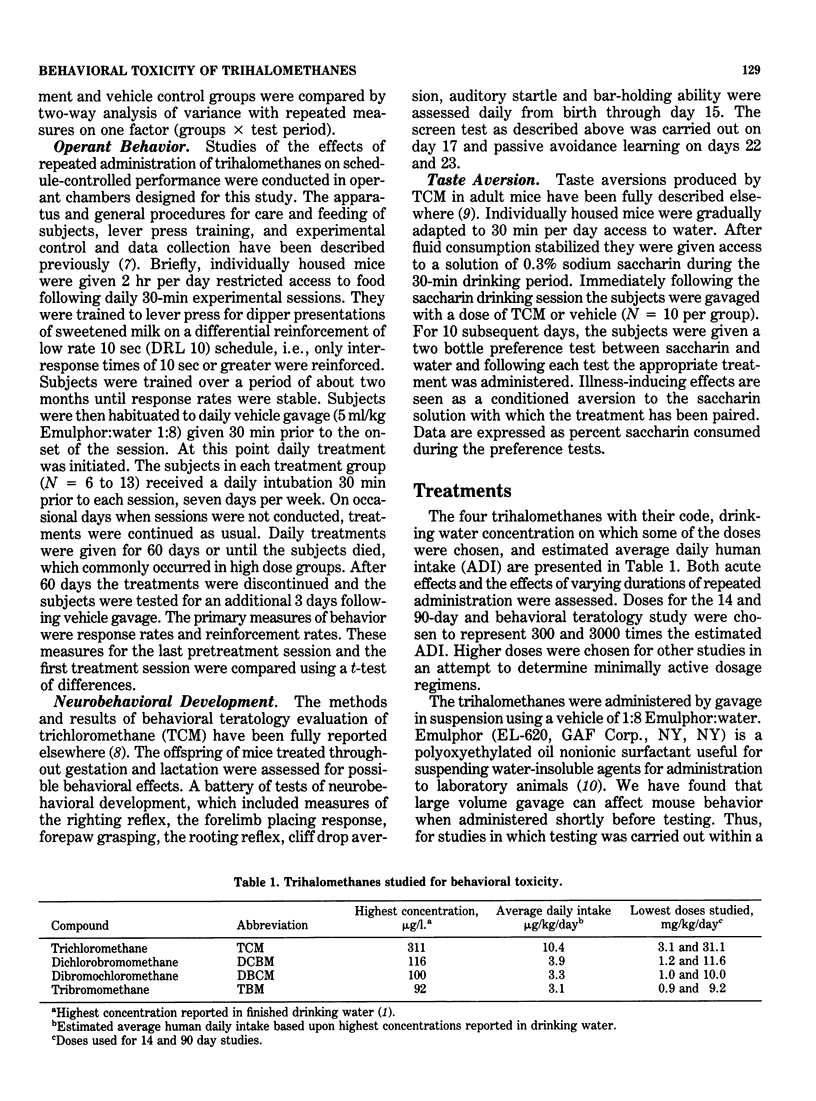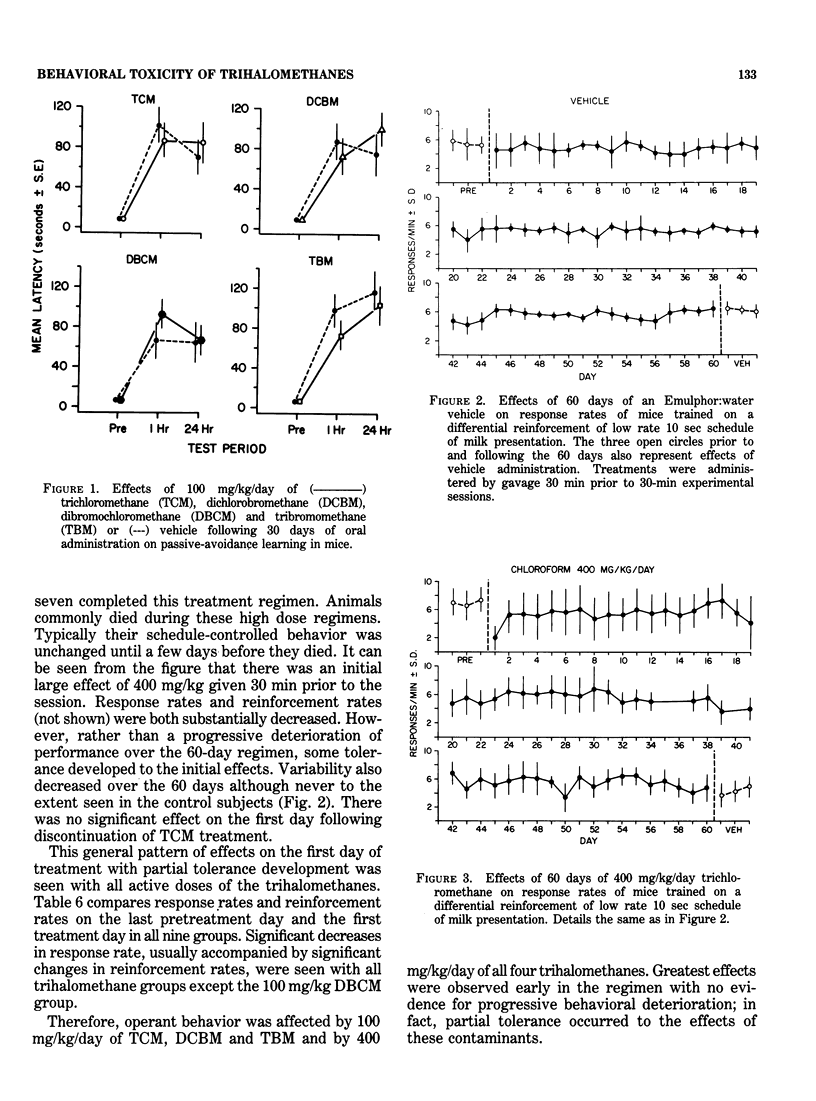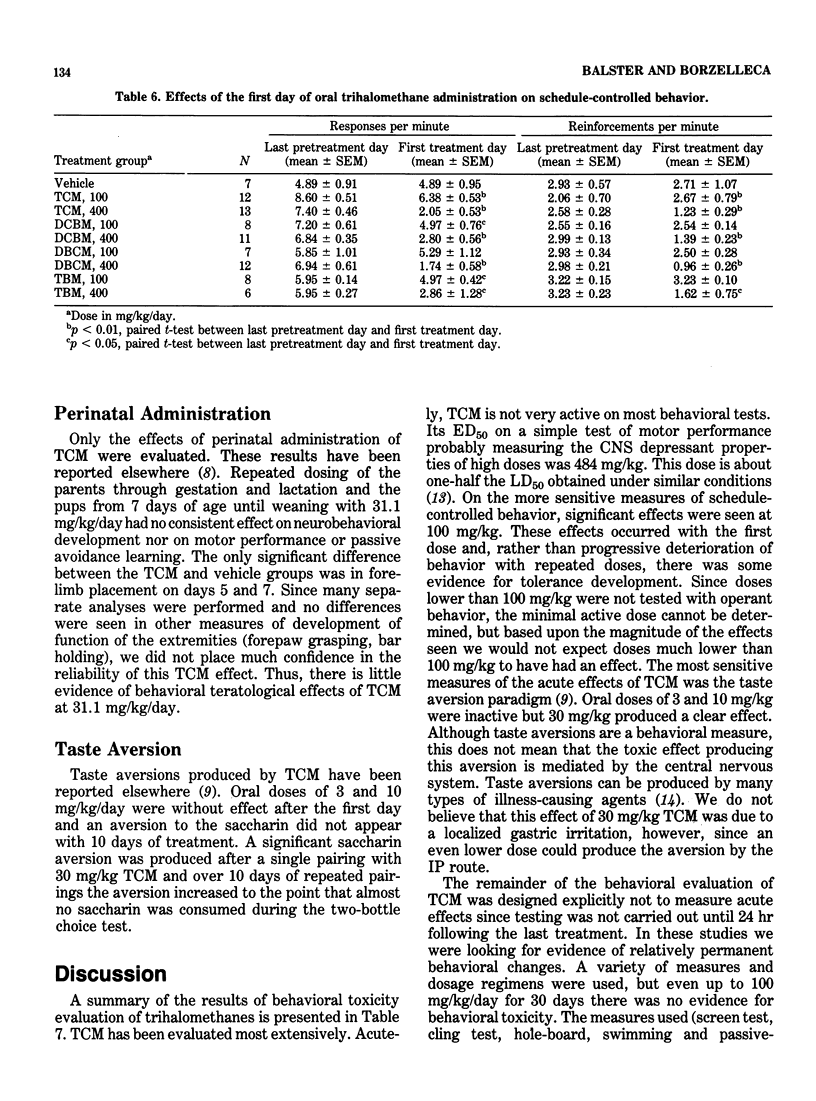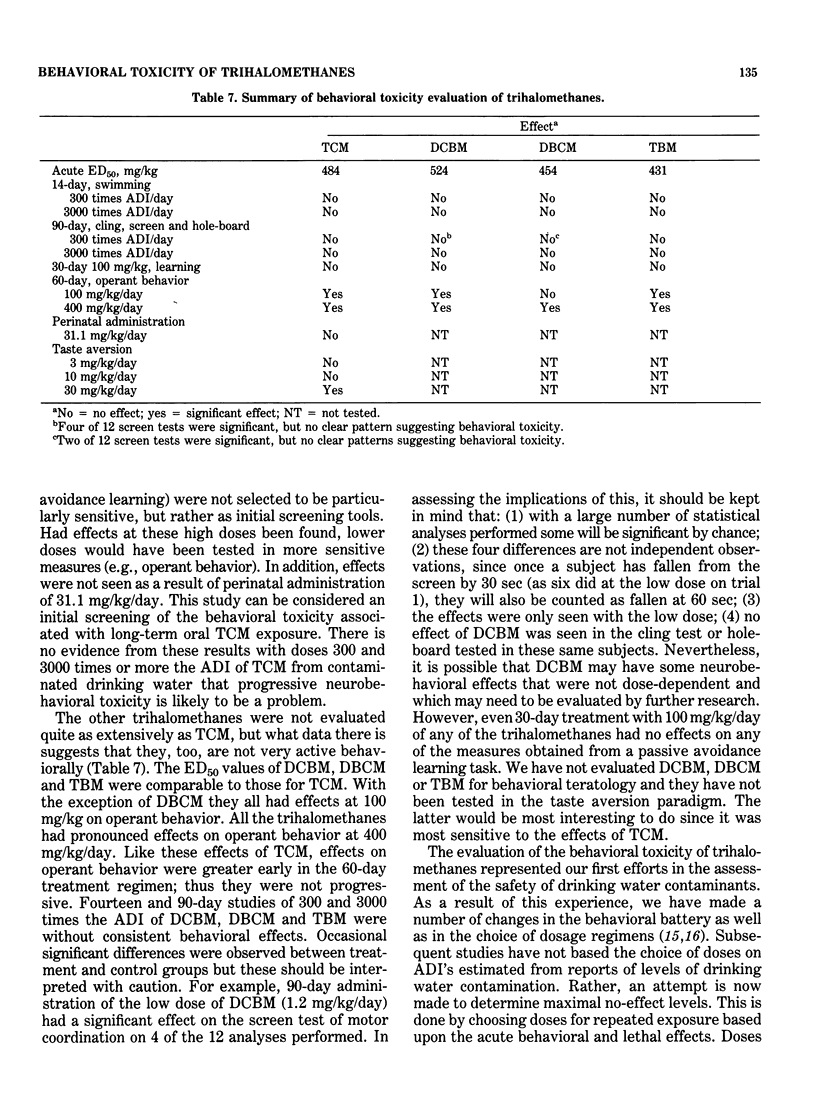Abstract
The behavioral toxicity of trichloromethane (TCM), dichlorobromomethane (DCBM), dibromochloromethane (DBCM) and tribromomethane (TBM) was evaluated following oral administration in mice. A variety of dosage regimens and behavioral measures were used. Studies included acute dose effect, 14-and 90-day treatments at 300 and 3000 times the estimated average human daily intake of contaminated drinking water, 30 days of 100 mg/kg/day, and 60 days of 100 and 400 mg/kg/day. In addition, TCM was tested for the production of taste aversions with 10-day administration and for behavioral teratology in offspring following extensive perinatal exposure. The ED50 for acute effects on a screen test of motor performance was about 500 mg/kg for all four trihalomethanes. The 14-day treatments had no effect on swimming behavior and the 90-day treatments had no effect on bar clinging, a test of motor coordination, and a measure of exploratory behavior. None of the compounds produced effects on passive-avoidance learning following 100 mg/kg/day for 30 days. TCM, DBCM and TBM elicited clear effects at both 100 and 400 mg/kg/day on operant behavior when administered for 60 days. DBCM elicited clear effects at 400 mg/kg/day. These effects on operant behavior were seen following the first dose and tolerance tended to develop. Thus, there was no evidence from these studies for a progressive neurotoxicity from trihalomethanes in adult mice. A behavioral teratology study was also conducted with TCM. Both parents were treated with 31.1 mg/kg/day TCM, and treatment of the dam continued throughout gestation and lactation. No clear evidence for behavioral effects in the offspring were observed. The most sensitive measure for the effects of TCM was the taste aversion paradigm in which saccharin aversions were produced after a single treatment of 30 mg/kg.
Full text
PDF









Selected References
These references are in PubMed. This may not be the complete list of references from this article.
- Baird J. B., Balster R. L. Analysis of nominal dose-effect data with an advanced programmable calculator. Neurobehav Toxicol. 1979 Spring;1(1):73–77. [PubMed] [Google Scholar]
- Balster R. L., Baird J. B. Effects of phencyclidine, d-amphetamine and pentobarbital on spaced responding in mice. Pharmacol Biochem Behav. 1979 Dec;11(6):617–623. doi: 10.1016/0091-3057(79)90252-1. [DOI] [PubMed] [Google Scholar]
- Bowman F. J., Borzelleca J. F., Munson A. E. The toxicity of some halomethanes in mice. Toxicol Appl Pharmacol. 1978 Apr;44(1):213–215. doi: 10.1016/0041-008x(78)90300-9. [DOI] [PubMed] [Google Scholar]
- Burkhalter J. E., Balster R. L. Behavioral teratology evaluation of trichloromethane in mice. Neurobehav Toxicol. 1979 Fall;1(3):199–205. [PubMed] [Google Scholar]
- Carney J. M., Uwaydah I. M., Balster R. L. Evaluation of a suspension system for intravenous self-administration studies of water-insoluble compounds in the rhesus monkey. Pharmacol Biochem Behav. 1977 Oct;7(4):357–364. doi: 10.1016/0091-3057(77)90232-5. [DOI] [PubMed] [Google Scholar]
- Coughenour L. L., Mclean J. R., Parker R. B. A new device for the rapid measurement of impaired motor function in mice. Pharmacol Biochem Behav. 1977 Mar;6(3):351–353. doi: 10.1016/0091-3057(77)90036-3. [DOI] [PubMed] [Google Scholar]
- Deinzer M., Schaumburg F., Klein E. Environmental health sciences center task force review on halogenated organics in drinking water. Environ Health Perspect. 1978 Jun;24:209–239. doi: 10.1289/ehp.7824209. [DOI] [PMC free article] [PubMed] [Google Scholar]
- Dowty B., Carlisle D., Laseter J. L., Storer J. Halogenated hydrocarbons in New Orleans drinking water and blood plasma. Science. 1975 Jan 10;187(4171):75–77. doi: 10.1126/science.1109227. [DOI] [PubMed] [Google Scholar]
- File S. E., Wardill A. G. Validity of head-dipping as a measure of exploration in a modified hole-board. Psychopharmacologia. 1975 Oct 14;44(1):53–59. doi: 10.1007/BF00421184. [DOI] [PubMed] [Google Scholar]
- Landauer M. R., Lynch M. R., Balster R. L., Kallman M. J. Trichloromethane-induced taste aversions in mice. Neurobehav Toxicol Teratol. 1982 May-Jun;4(3):305–309. [PubMed] [Google Scholar]
- Nolan N. A., Parkes M. W. The effects of benzodiazepines on the behaviour of mice on a hole-board. Psychopharmacologia. 1973;29(3):277–286. doi: 10.1007/BF00414043. [DOI] [PubMed] [Google Scholar]


